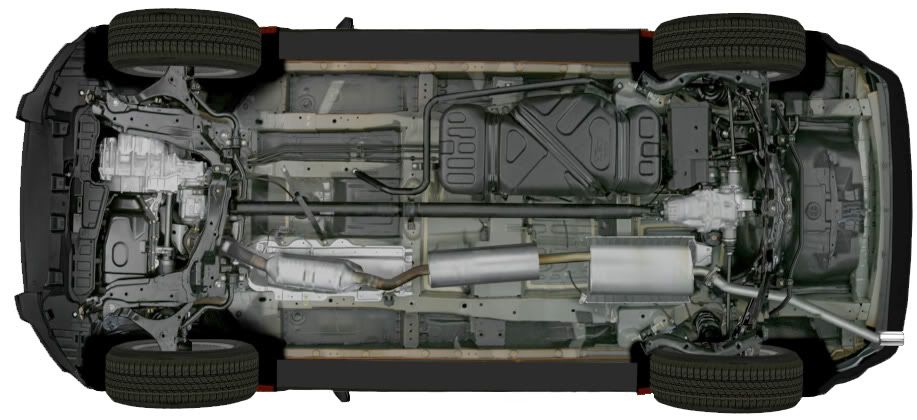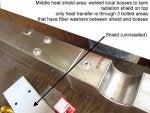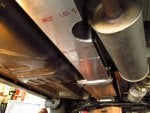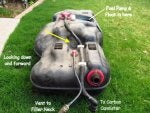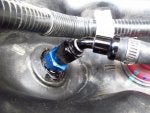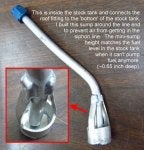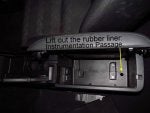OK, so now to finally answer Ramblerdan's question about temperatures. I placed a thermocouple in the fuel line, measuring temperature of the fuel headed towards the engine. First I ran it stock. The primary source of fuel heating is the warm air coming off the radiator - slowly heating the entire fuel tank, as it is bathed in a mixture of ambient and radiator exit air.
Essentially, you'll see the fuel temps stabilize some number of degrees above the ambient air temps. In the summer this is the highest, as the air exiting the radiator is attempting to remove the most BTU/hour out of the cooling system. It takes about two hours for things to stabilize. I've tested other cars in the past and would see maximum fuel temperatures stabilize around 15 to 20 degrees above ambient in the summer. The E was no different... around 20°F hotter than the outside air temp.
Then I completed the installation of the second fuel tank and left the instrumentation attached - then drove 550 miles non-stop, towing about 1000 pounds. The results are below. Bottom line: still only 20°F over ambient.
ANALYSIS:
The left scale in the plot below is temperature, °F. The pink line is ambient air temps, the yellow line is fuel temp. The bottom scale is time, from 11AM to about 8:15 PM. Note that the pink and yellow start at the same value and as I started the engine and drove for the first 3 hours (Phoenix to Kingman), the ambient air temp was pretty stable at just over 100°F, and the fuel temps climbed away from this value and stabilized around 20°F higher at around 120°F.
The blue line is the difference between the yellow and pink lines, and is displayed on the right scale. 20°F delta once stabilized.
Then from Kingman to Vegas, you can see the ambient temp climb from 100°F or so to 112°F or so. The fuel temps climbed too, but there's a lag in how long it takes to heat all that fuel, so the delta t appears lower (around 15°F) as ambient temps are climbing.
Then from Vegas to Ely, the opposite happened. The air temps dropped from 112°F down to around 72°F, and now the fuel temp dropped as well, but delayed due to the time constant. So the delta t along that section looks higher, around 25°F.
So - bottom line - I'm still seeing fuel temperatures similar to stock.
![Image]()
